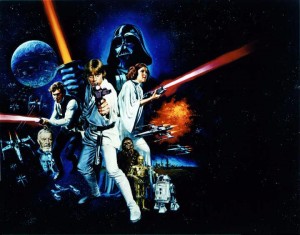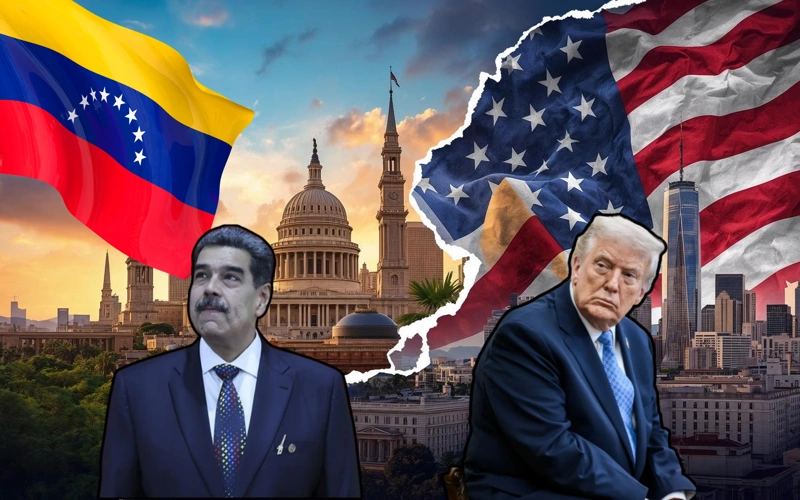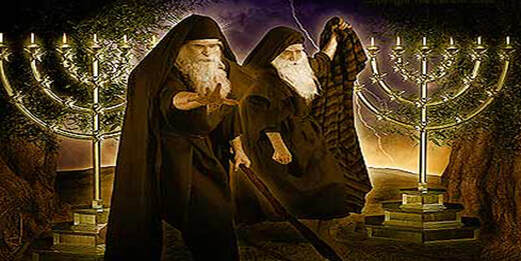(ThyBlackMan.com) Every movie has at least one scene that sticks with you long, long after you’ve seen it. In the first Star Wars recall the brave, desperate struggle to destroy the Death Star, the gargantuan vessel, as big as a small moon, with enough firepower to obliterate a planet, which it actually does at the beginning of the film. At the climax of the movie, Luke Skywalker in a flimsy craft braves showers of enemy missiles to skim along its surface and fire a rocket at its one, extremely small, vulnerable spot blasting it to shreds in a stupendous explosion. With one blow he thus halts the relentless advance of the Evil Empire on the one lone bastion of liberty left in the entire galaxy. Remember? Of course you do.
But what does it all mean? Who is Luke, on the subconscious level, meant to  remind us of? And what does the Death Star and its destruction symbolize?
remind us of? And what does the Death Star and its destruction symbolize?
Here’s another clue. Recall that Luke Skywalker was a young shepherd on a remote desert planet. He was just a regular seeming youth, but unbeknownst to him he was destined for greatness. Get it? A young shepherd becomes a great warrior after slaying a giant enemy of his people? Yes, David. Luke Skywalker is David in the Bible and the Death Star stands for Goliath, the giant who led the Philistines against the Hebrews. God told David to have faith and not to even aim his stone, just put it in his sling and let fly. Likewise, at the moment of truth in Star Wars a mystic voice tells Skywalker not to use his viewfinder, but to “use the force, Luke, use the force.”
Now who or what did Darth Vader symbolize? What does “Darth Vader” sound like? Dark Invader. And he was Black, in fact, his voice was that of James Earl Jones. And is not the Black man, in the eyes of the mass media, a fierce, alien, evil force?
The Death Star and its destruction symbolize something else in history, a momentous event around the middle of the 20th century. Recall how, in the film, the rag tag Rebel Alliance was on the run and being hunted down until they made a desperate stand against the Death Star? What does that remind you of? A liberty loving group of people, set upon by a ferocious, invincible foe who suddenly turn around and strike a mighty blow, badly stunning their heretofore undefeated enemy?
That is precisely what happened at the Battle of Midway in December, 1942. A small US naval force engaged, and decisively defeated, the largest fleet the world has ever seen. Inexperienced Navy pilots launched themselves in a series of suicide waves until they finally got through and hit all their targets. Within the space of thirty minutes three Japanese aircraft carriers were destroyed and a fourth crippled at the Battle of Midway, the turning point of the War in the Pacific.
However, note the irony! The layout and development of the film was to a large degree inspired by the Samurai warrior epics of famed Japanese director Akira Kurosawa, most notably his 1958 film Hidden Fortress. Another major influence was Sam Delany’s Babel-17. In that 1967 science fiction novel we encounter a huge dark complected warrior, a beautiful princess and a massive warship. Harlem born, African American Sam Delany in 1966 at the age of 24 won the Nebula Award for best scifi novel for Einstein Intersection, and he won it again a year later for Babel-17.
The massive ship in Babel-17 was called “Jebel’s Mountain.” Note, the Rock of Gibraltar is the gigantic rock found on the island of Gibraltar which lies between Morocco in Africa and Spain in Europe. Gibraltar is named after the African general, Tarik, who led the attack force which conquered Spain in 711. “Gibraltar” literally means “Tarik’s Mountain” which became “Jebel’s Mountain” in Babel-17 and the “Death Star” in Star Wars.
But back to the notion of Luke Skywalker and the Death Star symbolizing David and Goliath. Many of the San Francisco filmmakers of the 1970s, like George Lucas, Stephen Spielberg and Francis Ford Coppola, were avid followers of the West coast philosopher/professor Joseph Campbell who penned the book, The Hero With a Thousand Faces. In it he observes that many legends, and true life stories, around the world, center on the same basic idea. A young hero goes on an epic journey to tackle a terrific foe or obstacle of some kind. He ultimately succeeds and thereby gains tremendous powers and insights that he uses to benefit his people.
Examples include, Moses, Buddha, Christ, David, Osiris, Einstein, Freud, etc.. The adventure can entail war, discovery of new lands, inventions, ideas or anything involving the unknown. In every instance, however, as is the case here in Star Wars, when all is said and done, what appears to be a struggle with an external foe, is in reality a battle with an internal demon or barrier of some kind. “All knowledge is self knowledge.” As the ancient Egyptians constantly proclaimed. “Know thyself. Know thyself. Know thyself!”
Finally, is it my imagination, or does the symbol for the Infinity, an automobile made in Japan, resemble the black masked face of Darth Vader?
Staff Writer; Arthur Lewin
This talented writer has also self published a book which is entitled; Read Like Your Life Depends On It.

















you say you are smart and that black invited music wells blues or jazz but yet you did no research on any on this music came WAY before any white or black man said they are the reason we have this type of music. GOD is the only reason we have anything period and I am sure no 100% sure we had music before slaves. This why we are divided people like taking credit were there should be no credit to one race but to all. STOP the hate and come together as ONE.
Thanks, Mitchell. Roughly speaking,the Western, rational perspective is on one side and the Asian, African, Native American, etc.. holistic traditions are on the other side. The Western tradition appears to be basically aimed at conquering and ruling the external, material world whereas these other traditions are aimed at conquering and ruling the internal, world, the self. Perhaps one thing all can agree on is that though we live in a world that appears to contain a vast multitude of others and other things, in reality, the entire universe is a construct of one’s own consciousness.
Most of it comes from of course the Hidden Fotress but also Samurais and Zen also Buddhism/Hinduism and Budo with the Jedis also Taoism.
Those are the main influences through out the film and also self discovery which is a vital part of those influences.
Thanks for the info Chilmayka. I believe it is also true that some of the accessories were copied from ancient Egyptian items.
Cool. I like finding out about seminal authors. It might be worth noting
for your website that Chris Foss had most of his artwork lifted for the “look” of Star Wars. Both George AND Ralph McQuarrie just used anything they could find as reference material that looked cool. You’ll even see a Death Star(and Star Destroyer) amongst his work. Probably the biggest act of plagiarism in cinema history. Which explains the prequels!
Here: http://astrona.blogspot.com/2007/08/chris-foss-illustrations-and-sci-fi-art.html